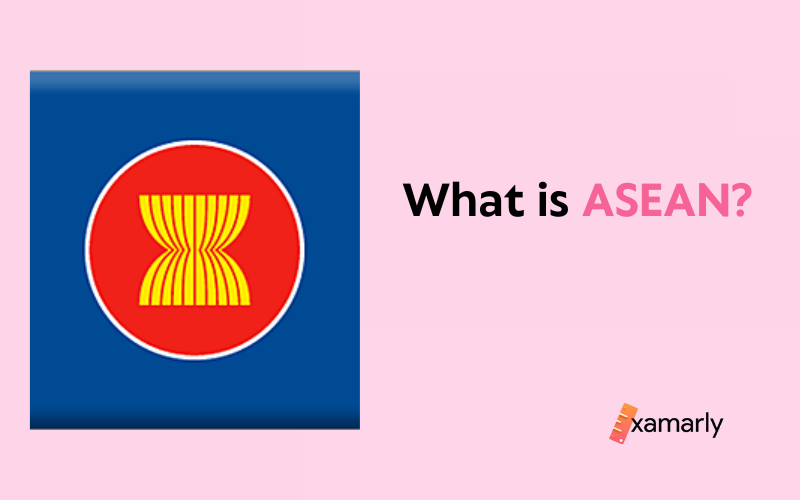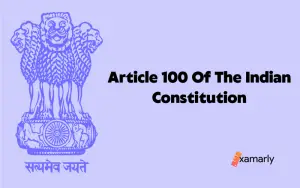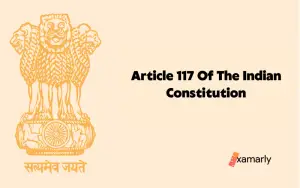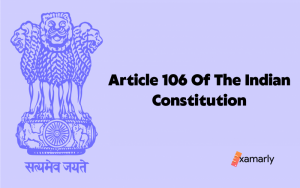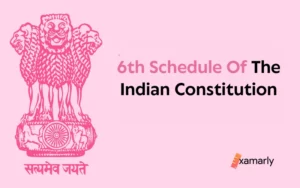The Association of Southeast Asian Nations or ASEAN is a 10-member political union from the region of South-East Asia.
The purpose of ASEAN is to take essential measures to promote economic and intergovernmental cooperation among its members and emphasis more on cultural development and sustainable development.
Several countries including Indonesia, Vietnam, Singapore, the Philippines, and Malaysia have joined ASEAN.
Below is a short overview of ASEAN. Read on more to know all about it.
In its early years, ASEAN countries were loosely held together, but the dynamic economic growth of the 1970s gave it new cohesion.
As a result, ASEAN responded unified to the invasion of Cambodia by Vietnam in 1979. In 1976, its members met in Bali, Indonesia, to launch the organization’s first summit.
The leaders forged several agreements and the Declaration of Concord and the Treaty of Amity and Cooperation were signed.
Going deeply through this article can help you in your UPSC preparation. Let us continue knowing.
- What is ASEAN – In Detail
- Member Nations
- All About ASEAN
- 1. Headquarter of ASEAN
- 2. Motto of ASEAN
- 3. ASEAN FLAG
- 4. Secretary-General
- 5. Official Languages and Working Language
- ASEAN Objectives
- ASEAN: Core Values
- Mechanism of the Institution
- ASEAN Regional Forum
- Strengths & Opportunities
- Challenges
- ASEAN and India
- Conclusion
- Some Important FAQ's
What is ASEAN – In Detail
The political and economic union of ten Southeast Asian countries is known as the Association of Southeast Asian Nations or ASEAN.
It fosters intergovernmental cooperation and mutual assistance that makes it easier for its members and other nations in the Asia-Pacific to integrate economically, politically, militarily, educationally, and socio-culturally.
Genesis of ASEAN
- The Association of Southeast Asian Nations (ASEAN) was founded by Singapore, Malaysia, Thailand, Indonesia, and the Philippines. These countries signed the Bangkok Declaration (also known as the ASEAN Declaration) on August 8, 1967, in Bangkok, Thailand. The Association of Southeast Asian (ASA) contained the Philippines, Thailand, and Malaysia; this new union replaced that organisation.
- In succeeding years, five more countries joined the institution, bringing the total number of members to 10 at present.
- 1995 – Members agreed and a deal was signed to make Southeast Asia a nuclear weapons-free region.
- 1997 – ASEAN Vision 2020 was adopted.
- 2003 – To create an ASEAN Community, Bali Concord II was implemented.
- 2007 – The Cebu Declaration came. Inducing the acceleration of the ASEAN community’s establishment by 2015 was its main aim.
- 2008 – There was a legally binding agreement in place when the ASEAN Charter went into effect in 2008. Hence it was now made a legal entity.
- 2015 – ASEAN Community‘s debut.
- The three pillars that make up the ASEAN Community:
- ASEAN Political-Security Community
- ASEAN Economic Community
- ASEAN Socio-Cultural Community
- The three pillars that make up the ASEAN Community:
Member Nations
There are 10 member countries of ASEAN. The name of these countries is tabulated below.
| State | Capital | Is This Nation A Founding Member | Accession |
|---|---|---|---|
| Bangkok | Yes | August 8, 1967 | |
| Kuala Lumpur | Yes | August 8, 1967 | |
| Singapore | Yes | August 8, 1967 | |
| Jakarta | Yes | August 8, 1967 | |
| Manila | Yes | August 8, 1967 | |
| Bandar Seri Begawan | No | January 7, 1984 | |
| Hanoi | No | July 28, 1995 | |
| Naypyidaw | No | July 23, 1997 | |
| Vientiane | No | July 23, 1997 | |
| Phnom Penh | No | April 30, 1999 |
When the ASEAN Charter entered into force in 2008, it became a legally enforceable document.
All About ASEAN
1. Headquarter of ASEAN
The ASEAN headquarters are in Jakarta, Indonesia.
2. Motto of ASEAN
“One Vision, One Identity, One Community”
3. ASEAN FLAG
The ASEAN flag has ten stalks of rice to symbolise the ten countries in Southeast Asia that have united as one.
4. Secretary-General
Secretary General of ASEAN: Dato Lim Jock Hoi
5. Official Languages and Working Language
- Official Languages: Contracting states’ official languages are Burmese, Filipino, Indonesian, Khmer, Lao, Malay, Mandarin, Tamil, Thai, and Vietnamese.
- Working Language: English
ASEAN Objectives
- The Association of Southeast Asian Nations (ASEAN) has as its major purpose the acceleration of economic development, which would in turn speed the advancement of ASEAN’s social and cultural institutions. Promoting peace and security in the region based on the rule of law and the United Nations charter.
- Member cooperation and aid in areas of shared interest, such as the social, cultural, technological, economic, scientific, and administrative, are actively encouraged. Effective collaboration for efficient utilization of industries and agriculture, trade expansion, improving facilities like trade transport and communications, and raising the living standards in member countries.
- Active promotion of Southeast Asian studies.
- Cooperating with international and regional organizations for mutual benefits.
- The pursuits of ASEAN also include standing on the projection of being the fourth-largest economy in the world by 2050.
As ASEAN consists of some of the world’s fastest-rising economies, ASEAN’s ambitions have grown beyond the economic and social sectors.
ASEAN: Core Values
The essential values of ASEAN, as outlined in the 1976 Treaty of Amity and Cooperation in Southeast Asia (TAC) are given below:
- Mutual respect for all nations’ independence, sovereignty, equality, geographical integrity, and national identity;
- Non-interference in one another’s domestic matters;
- Every state has the right to conduct its internal affairs without intervention from outside forces or coercion;
- Abandoning the use of force or threats of using it;
- Peaceful resolution of problems or disputes;
- Effective collaboration with one another.
Mechanism of the Institution
- ASEAN’s chairmanship is rotated annually based on the alphabetical sequence of Member States’ English names.
- ASEAN Summit: ASEAN’s highest policy-making body. It is the highest level of authority in ASEAN terms and sets the direction for policies and objectives. The Summit is required under the Charter to meet twice a year.
- The Charter also created four major new Ministerial institutions within ASEAN to help facilitate the Summit. a. ASEAN Coordinating Council (ACC)
b. ASEAN Political-Security Community Council
c. ASEAN Economic Community Council
d. ASEAN Socio-Cultural Community Council - For the most part, consultation and consensus are used in the ASEAN decision-making process.
The ASEAN-x Concept, however, is codified in the Charter, which stipulates that if all member nations agree, an adaptive engagement mechanism might be utilised to allow those that are ready to go forward to do so, while others who need more time to implement can adopt a more malleable timeline.
ASEAN Regional Forum
- The ASEAN Regional Forum (ARF): It was established in 1993 as a multilateral organisation with 27 members to enhance cooperation on political and security issues, promote preventive diplomacy, and boost regional trust.ASEAN Plus Three (ASEAN+3). The consultative group, founded in 1997, includes ten member nations, as well as China, Japan, and South Korea.
- EAS (East Asia Summit): The summit, which was first convened in 2005, aims to promote regional security and prosperity. Heads of Member nations, Australia, China, India, Japan, New Zealand, Russia, South Korea, and the United States generally attend this summit. The setting of the agenda is a core feature of ASEAN.
Related Article – ACT EAST POLICY
Strengths & Opportunities
The biggest strength of ASEAN is that it, collectively, holds a significant influence that its members did or could have achieved individually.
Collectively it consists of the third largest population in the world and the number of people below thirty is more than 50% of that population.
Economically, ASEAN is the world’s third-largest market. It is larger than the European Union and North American markets.
Collectively the member nations form the world’s sixth-largest economy and are placed third in Asia.
ASEAN has good economic integrations and Free Trade Agreements (FTAs) with India, Australia, Japan, South Korea, New Zealand, and China.
Globally the fourth most popular investment destination. Its global export share has risen 7 per cent in 2016. It is a huge leap from the 2 per cent in 1967.
Initiatives like ASEAN Single Aviation Market and Open Skies policies helped it to achieve greater transport and connectivity potential.
Building conventions and creating a neutral atmosphere to handle common concerns have substantially helped create regional stability.
Challenges
There are many challenges that ASEAN faced in its smooth operation and that it strives to overcome.
Numerous regional imbalances are seen in the economics and social status of various individual markets of member states.
A substantial gap is there between the rich and poor member nations. Many less developed members are not able to implement regional commitments due to resource constraints because of this.
Government systems in member nations are diverse. Some are democracies, and others are communists or authoritarian states.
As a result of China’s extensive maritime claims in the South China Sea, it has been unable to reach an agreement with the United States. This issue also exposes the institution’s rifts.
The institution seems divided on major Human Rights issues like the anti-Rohingya crackdowns in Myanmar. Many Human Rights Organizations criticized ASEAN for its stand.
The reliance on the agreement may be a significant disadvantage at times, as many challenging problems are ignored rather than faced and solved.
A key concern is the lack of a centralized method to ensure compliance, as well as an ineffective dispute resolution system.
ASEAN and India
- The Act East Policy is a pillar of Indian foreign policy, and it is based on the bilateral relationship between India and the Association of Southeast Asian Nations.
- Separate missions to ASEAN and the EAS are maintained by India in Jakarta.
- India and ASEAN have had some kind of relationship for 25 years; their conversation partnership dates back another 25 years, their summit-level contact back another 15 years, and their strategic cooperation dates back another 5 years. In terms of economic relations, India is ASEAN’s fourth-largest trade partner.
- India’s trade with ASEAN accounts for approximately 10.6 per cent of the total Indian trade.
- India’s exports to ASEAN, as a single market, accounting for 11.28 per cent of total exports. The ASEAN-India Free Trade Agreement is in place.
- In 2003, the ASEAN India-Business Council (AIBC) was established to provide a unified forum for the leading business interests of India and the Association of Southeast Asian Nations (ASEAN).
- Enhancing Community Interaction via Socio-Cultural Cooperation: Courses for ASEAN Diplomats, Student and Parliamentary Exchange, and Other Programs Funds: ASEAN Countries are aided with the following funds:
- ASEAN-India Cooperation Fund
- ASEAN-India Science and Technology Development Fund
- ASEAN-India Green Fund
- Courses for ASEAN Diplomats, Student and Parliamentary Exchange, and Other Programs to Improve Intergroup Understanding via Mutual Understanding
- The Delhi Dialogue is an annual Track 1.5 gathering between ASEAN and India where they address political, security, and economic matters.
- The purpose of the ASEAN-India Centre (AIC) is to collaborate with groups in India and the Association of Southeast Asian Nations (ASEAN) to undertake research on policy, advocate for change, and build connections between the two regions.
- India places a premium on political and security cooperation with ASEAN as part of its Indo-Pacific strategy for ensuring regional stability and prosperity.
Conclusion
With many challenges at hand, ASEAN is progressively working in the right direction to build strategic relationships and partnerships.
These strategic moves are already giving fruit with trades and relationships getting stronger with time. It needs to engage in more intra-ASEAN trade to be a strong economic region.
The institution has a long way to go and achieve uniformity of ideas and thoughts among its member nations.
It should work progressively on reducing the economic gap that different economies of member nations have with collective action in areas like the economy, human development, and sustainable development while also ensuring social progress.
Some Important FAQ’s
Q: Is India A Member Of ASEAN?
In 1992, India became an ASEAN sectoral dialogue partner. India also joined the ASEAN Regional Forum (ARF) in 1996. Since 2002, India and ASEAN have held yearly summit discussions at the highest level. A Free Trade Agreement (FTA) was signed between India and the ASEAN nations in Thailand in August 2009.
Q: What Is The Full Form Of ASEAN?
ASEAN stands for Association of Southeast Asian Nations.
Q: When Was ASEAN Established?
It was founded on August 8, 1967, in Bangkok, by the five initial member countries of Malaysia, Indonesia, the Philippines, Thailand, and Singapore.
Q: What are the key activities and initiatives of ASEAN?
ASEAN is involved in a wide range of activities and initiatives, including promoting free trade and investment, fostering regional economic integration, addressing transboundary challenges such as climate change and natural disasters, and promoting peace and security through regional dialogue and cooperation.
Q: How does ASEAN impact the Southeast Asian region and the world?
ASEAN has a significant impact on the Southeast Asian region and the world. It helps to promote economic growth and development, foster regional stability and cooperation, and provide a platform for addressing regional and global challenges. Additionally, ASEAN is an important player in the global economy, as it is a large and growing market for goods and services.


